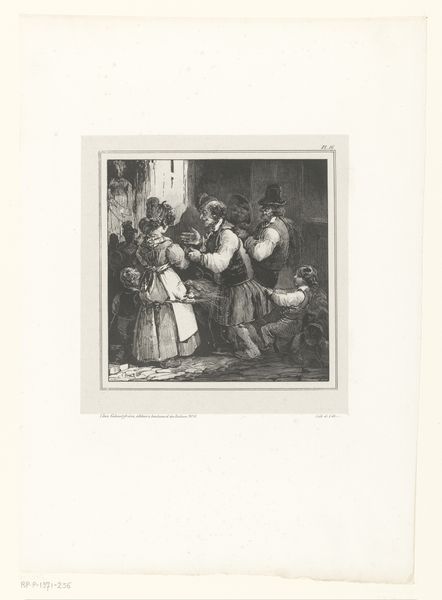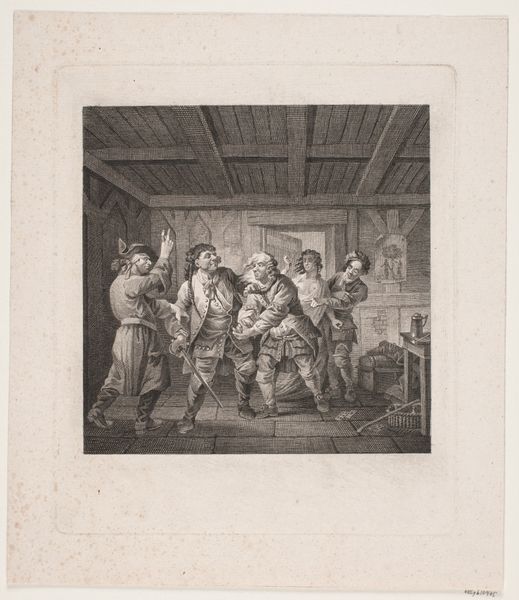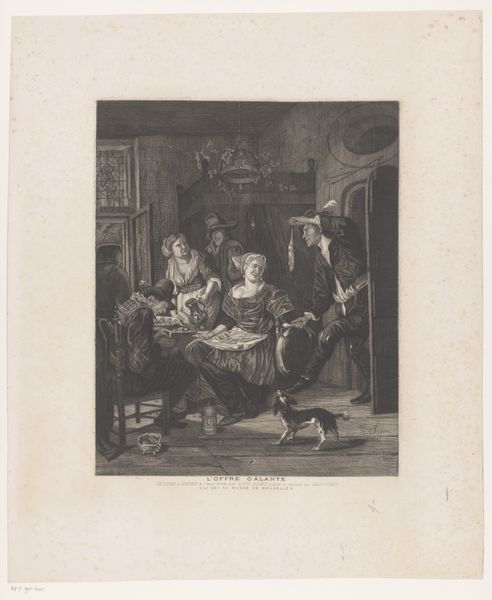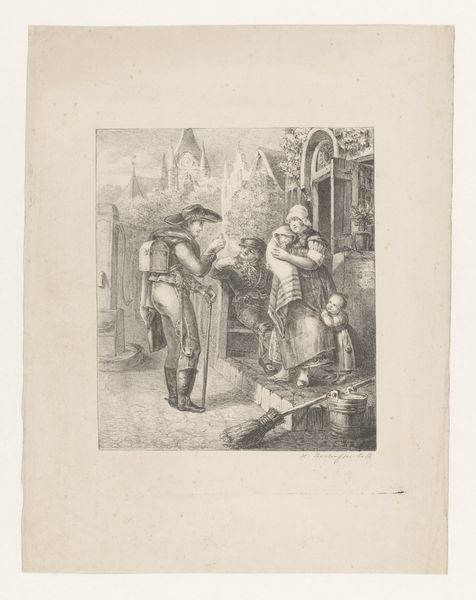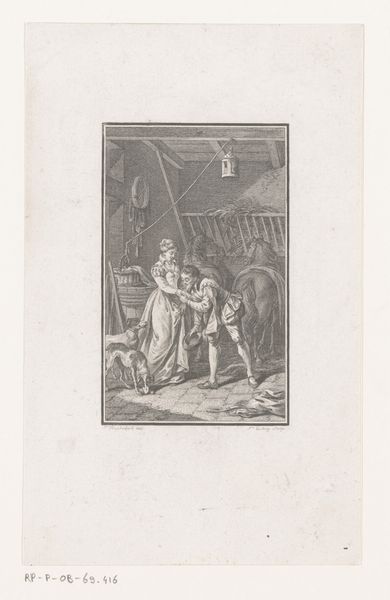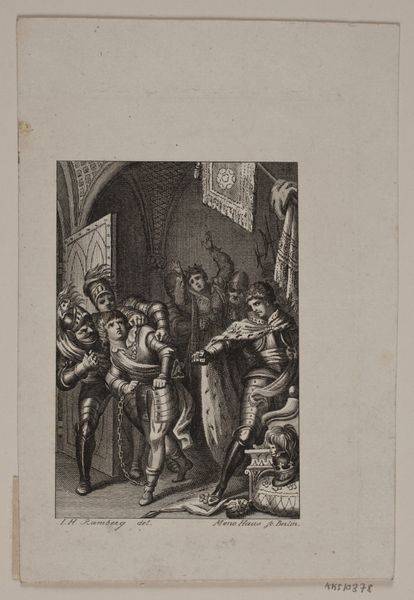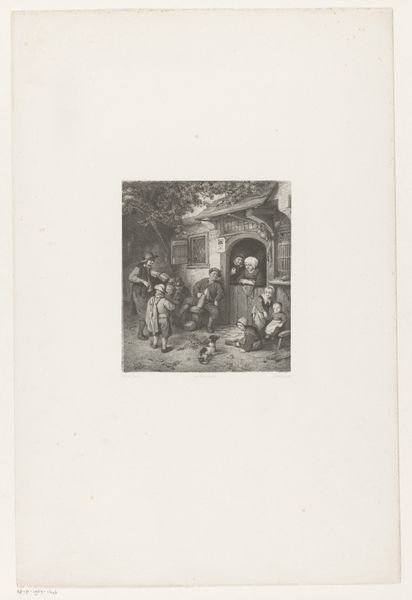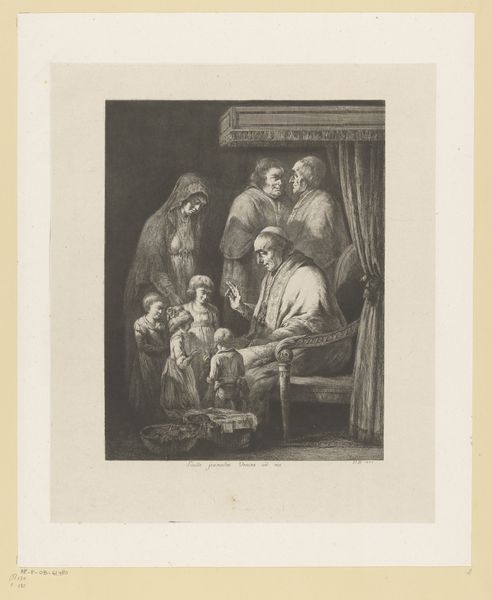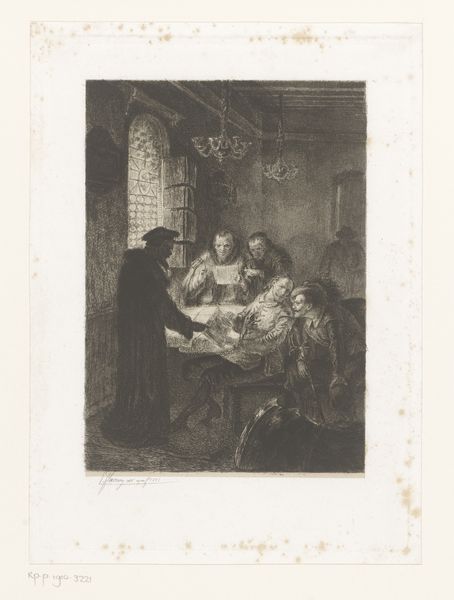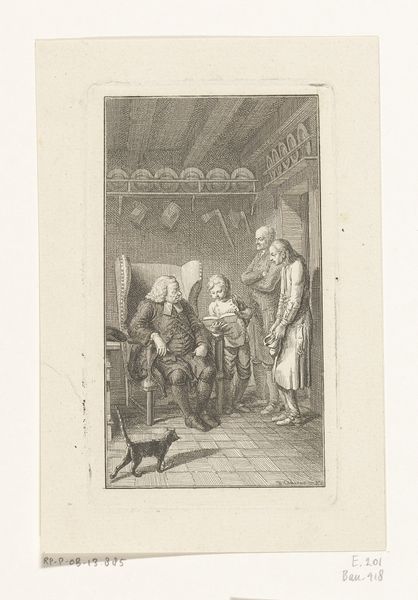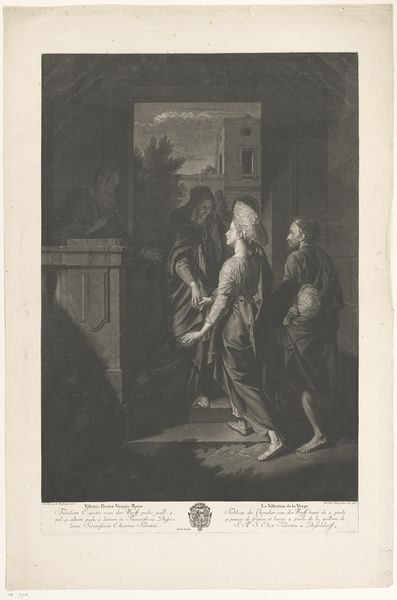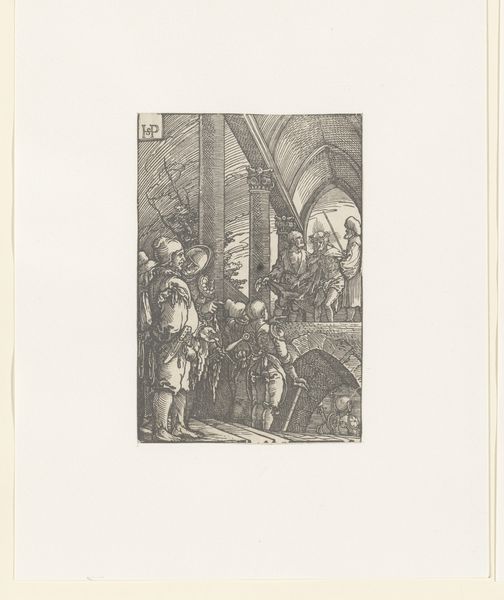
Dimensions: height 167 mm, width 115 mm
Copyright: Rijks Museum: Open Domain
Johan Coenraad Leich made this print of four men in seventeenth-century clothing sometime in the 19th century. Though seemingly a history painting, it reflects the artist's own time and context. Leich was working in a period of increasing historical consciousness and national identity formation in the Netherlands. Artists and intellectuals were re-evaluating their past, seeking to define what it meant to be Dutch. The choice of seventeenth-century attire, a period often considered the Dutch Golden Age, is no accident. It evokes notions of trade, prosperity, and cultural achievement, and a certain image of Dutch identity. But the print also speaks to the changing role of art. No longer just for the elite, art was becoming increasingly accessible to the middle class through prints and reproductions. It served a public function: to educate, to inspire, and to shape national identity. To fully understand art, we must look beyond the surface and delve into the social, cultural, and institutional forces that shaped its creation and reception. For that, historical archives, art criticism, and exhibition histories are vital resources.
Comments
No comments
Be the first to comment and join the conversation on the ultimate creative platform.
